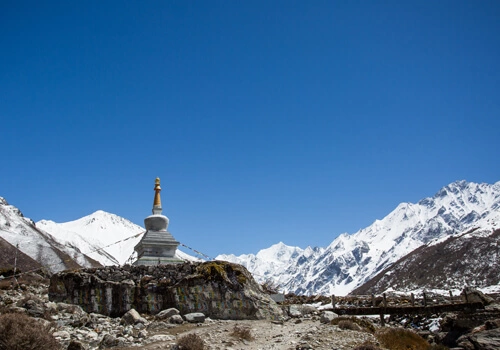Introduction to the Everest Base Camp Trek
The Everest Base Camp Trek, often hailed as one of the world’s most iconic adventures, offers a soul-stirring journey through Nepal’s Khumbu region. Standing at an altitude of 5,364 meters (17,598 feet), the base camp of Mount Everest is a dream destination for trekkers and mountaineers across the globe. Whether you’re seeking to conquer the trail or absorb the majesty of the Himalayas, the Everest Base Camp Trekking experience is unmatched.
From suspension bridges draped in prayer flags to vibrant Sherpa villages nestled in mountain folds, every step on the trek to Everest Base Camp brings you closer to the raw beauty and spirituality of the Himalayas.
Why Choose the Everest Base Camp Trek?
Choosing the Everest Base Camp Trek isn’t just about reaching a geographical destination—it’s about walking in the footsteps of legends, immersing yourself in ancient cultures, and witnessing the drama of the world’s highest peaks up close. From the bustling streets of Kathmandu to the peaceful monasteries of Tengboche and the icy windswept trails of Gorak Shep, the journey captures Nepal’s essence like no other trek.
Everest Base Camp Treks – A Glimpse into the Journey
1. Scenic Flights and Start at Lukla
The trek begins with a short yet thrilling flight from Kathmandu to Lukla. Considered one of the most dramatic airstrips in the world, Lukla is the launching point for most Everest Base Camp Treks. From here, the trek follows a well-trodden path used by Sherpas, yaks, and trekkers alike.
2. Namche Bazaar – The Gateway to Everest
Namche Bazaar (3,440 m) is a vibrant Sherpa town and an essential stop on the trail. It offers an opportunity for acclimatization and provides comforts like coffee shops, bakeries, and gear shops. You’ll enjoy stunning views of Kongde Ri, Thamserku, and your first distant glimpse of Everest.
3. Tengboche and Its Famous Monastery
Tengboche is home to one of the highest Buddhist monasteries in the world. With Ama Dablam standing majestically behind it, this sacred site allows trekkers a chance to reflect amidst spiritual chanting and incense smoke.
4. Into the Alpine Zone: Dingboche, Lobuche, and Beyond
As the trail gains altitude, you pass through alpine meadows and glacial moraine. Dingboche and Lobuche mark the route’s shift from forested landscapes to the stark, icy world of the Himalayas. It’s here the real endurance test begins.
5. Arrival at Everest Base Camp
Reaching Everest Base Camp is a moment of triumph. The massive Khumbu Icefall, prayer flags fluttering in the wind, and the distant sound of avalanches crashing off Lhotse make the effort worthwhile. You won’t see the Everest summit from base camp, but the power of the moment is overwhelming.
6. Sunrise from Kala Patthar
Though not the highest point of the trek, Kala Patthar (5,545 m) offers the best close-up view of Mount Everest. Watching the sunrise over Everest from here is a memory etched forever in every trekker’s heart.
14 Days Everest Base Camp Trek – Detailed Itinerary
Many agencies and solo trekkers follow a classic 14 Days Everest Base Camp Trek itinerary. Here’s a day-by-day overview:
Day 1: Arrival in Kathmandu (1,400 m)
Arrive in Kathmandu, meet your trekking guide, and prepare your gear.
Day 2: Fly to Lukla and Trek to Phakding (2,610 m)
Short flight followed by a three-hour walk to Phakding through pine forests and local hamlets.
Day 3: Trek to Namche Bazaar (3,440 m)
A longer day with a steep climb, crossing several suspension bridges over the Dudh Koshi River.
Day 4: Acclimatization in Namche
Hike to the Everest View Hotel or Khumjung Village to aid acclimatization.
Day 5: Trek to Tengboche (3,860 m)
Pass by rhododendron forests and arrive at the famous Tengboche Monastery.
Day 6: Trek to Dingboche (4,410 m)
The trail descends and then climbs steeply past Pangboche to reach Dingboche.
Day 7: Acclimatization in Dingboche
Optional hike to Nagarjun Hill (5,100 m) for panoramic mountain views.
Day 8: Trek to Lobuche (4,940 m)
Walk along glacial moraines with views of Nuptse and Pumori.
Day 9: Trek to Gorak Shep, Visit Everest Base Camp (5,364 m)
Reach Gorak Shep, then continue to Everest Base Camp—a full-day adventure.
Day 10: Hike to Kala Patthar (5,545 m) and Descend to Pheriche
Climb early for sunrise at Kala Patthar. Descend to Pheriche for rest.
Day 11: Trek to Namche Bazaar
Retrace your steps with a new perspective and lighter heart.
Day 12: Trek to Lukla
Final trekking day through villages and forests back to Lukla.
Day 13: Fly back to Kathmandu
Early morning flight, followed by a relaxing day in the capital.
Day 14: Departure or Continue Your Journey
Either fly home or extend your trip to other regions of Nepal.
Everest Base Camp Trekking – Key Highlights
- Altitude: Highest point at Kala Patthar (5,545 m)
- Total Distance: Approximately 130 km (round-trip)
- Duration: 14 days including acclimatization
- Difficulty: Moderate to strenuous
- Permits Required: TIMS, Sagarmatha National Park Permit, and Khumbu Pasang Lhamu Rural Municipality Permit
- Best Time: March–May and September–November
Cost of Everest Base Camp Trek
The Everest Base Camp Trek cost varies depending on whether you’re joining a guided group, hiring a private guide, or going solo. Here’s a general breakdown for a 14-day trek:
- Budget Package (Group Trek): $1000–$1300
- Mid-Range (Private Trek with Guide/Porter): $1400–$2000
- Luxury Trek (Lodges & Helicopter Return): $2500–$4500+
The cost includes permits, domestic flights, accommodation, meals, guide and porter services, and logistics. Tips, insurance, gear, and personal expenses are extra.
Trekking Tips for Everest Base Camp
- Acclimatize properly: Follow the acclimatization days to avoid altitude sickness.
- Hydrate and eat well: At altitude, staying hydrated and maintaining energy is crucial.
- Pack wisely: Bring thermal clothing, layers, a good sleeping bag, and trekking poles.
- Hire local support: A guide or porter enhances safety, provides cultural insight, and boosts the local economy.
- Travel insurance: Ensure it covers high-altitude trekking and emergency evacuation.
Cultural Encounters Along the Trail
Everest Base Camp Trekking offers more than natural beauty. It introduces you to the Sherpa culture, Tibetan-influenced Buddhism, and highland hospitality. You’ll visit monasteries, spin prayer wheels, and stay in teahouses that carry centuries of history.
Final Thoughts – Why the Everest Base Camp Trek Stands Out
The 14 Days Everest Base Camp Trek is more than just a physical challenge. It is a deeply emotional and spiritual journey. You’ll test your limits, meet incredible people, and stand before the tallest mountain on Earth. Each Everest Base Camp Trek reveals new insights—not just about the Himalayas but about your own endurance and spirit.
If you’re seeking one of the most rewarding experiences of your life, it’s time to trek to Everest Base Camp and write your own Himalayan story.
FAQs – Everest Base Camp Trekking
Q: How fit do I need to be for the Everest Base Camp Trek?
A: Moderate physical fitness and some trekking experience are recommended. With preparation, most healthy individuals can complete the trek.
Q: Is Everest visible from base camp?
A: Not the summit. For the best views, climb Kala Patthar.
Q: Do I need a guide for the trek?
A: Not mandatory, but highly recommended. A guide enhances safety and cultural experience.
Q: What is the food like on the trail?
A: Local meals like dal bhat, pasta, soup, and momos are widely available in teahouses.
Q: What kind of accommodation is available?
A: Teahouses provide basic but comfortable lodging throughout the trail.
Contact to welcome nepal treks:
You Can contact welcome nepal treks by using our email address info@welcomenepaltreks.com . We are available at any time.welcome nepal treks will deliver you price-worthy services, professional guides, trained staff, and assistance on every trip.





